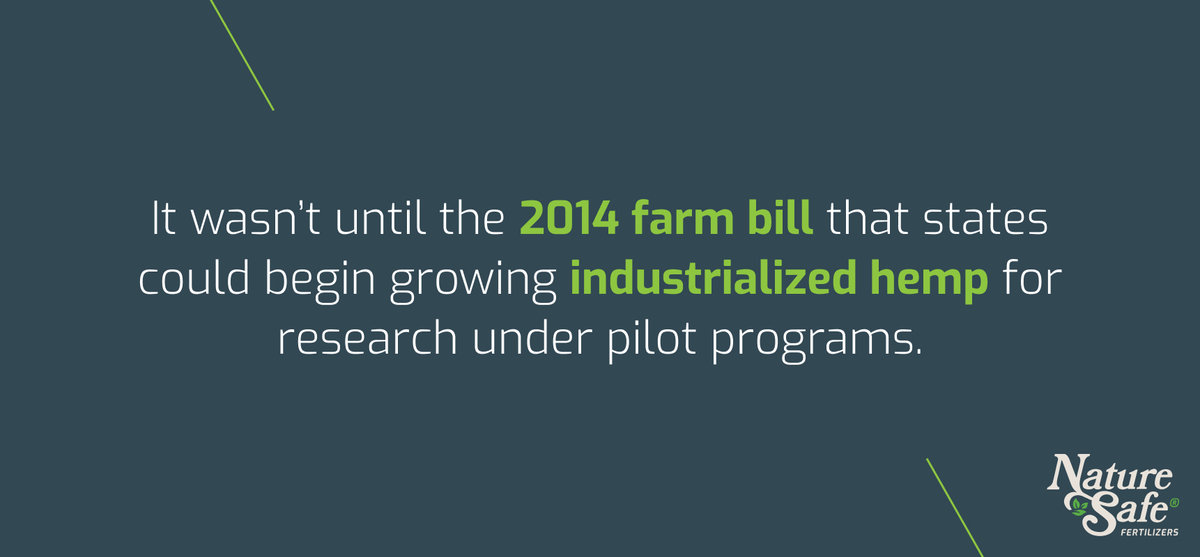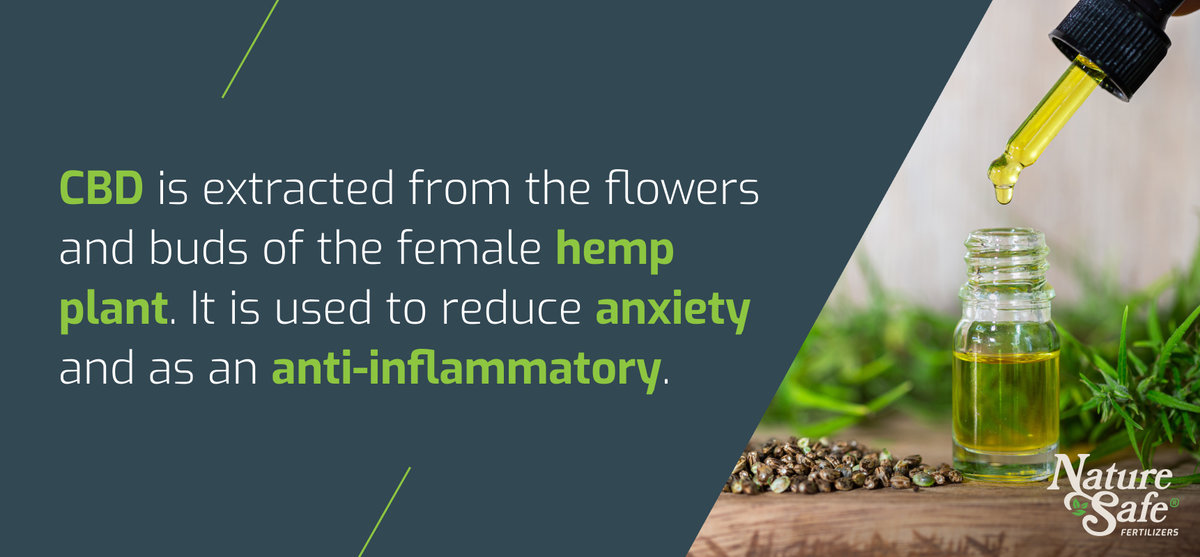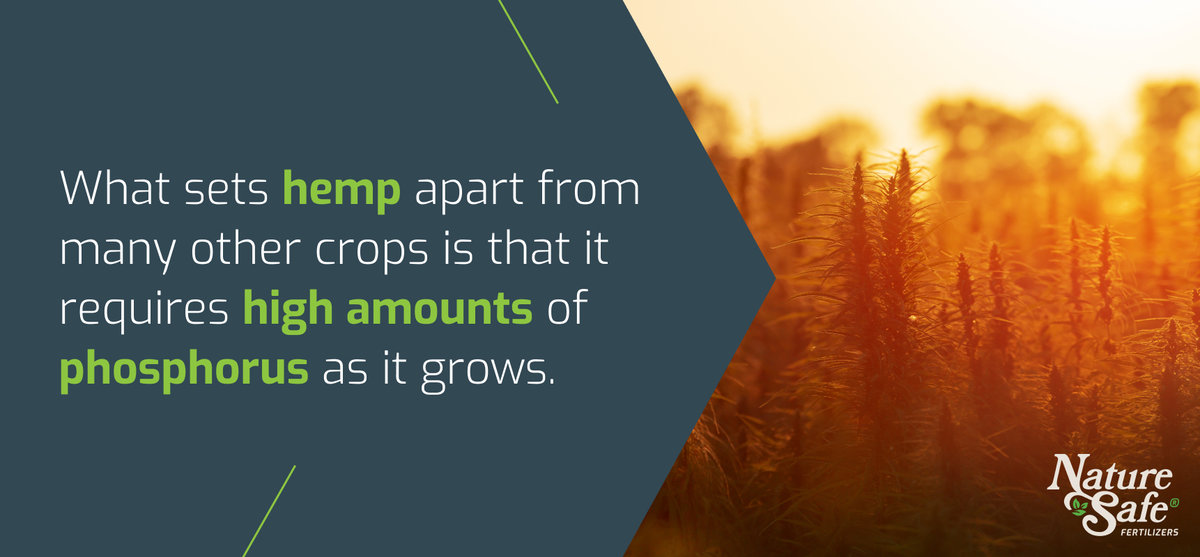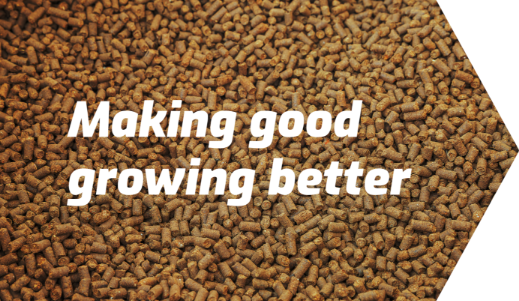
Commercial Hemp Growing: Everything You Need to Know
- Posted: Nov 17, 2022
- Author: Nature Safe Fertilizers
- Crop
The 2018 Farm Bill resulted in the legalization of hemp across the United States. Since then, plenty of research has been poured into hemp cultivation, and popularity has skyrocketed due to its many uses.
Why was such a versatile, lucrative, and historic crop only legalized four years ago? There is still some apprehension and uncertainty surrounding hemp. We’re here to dispel some myths and give a few reasons why you might try growing it.
History of Hemp in America
For thousands of years, all across the world, hemp has been used for its fiber and seeds. It first arrived in America in the 16th century to be cultivated for these same purposes. Yes, several of the founding fathers even grew hemp.
For the first few centuries of colonization in the US, hemp was one of our country’s most popular crops. Its seed oil was used in paint and ink, and its fibers were used for clothing, grain bags, and wagon covers.
Hemp thrived from the Southeast to the Midwest.
Once other fiber crops were introduced to North America, hemp became less sought-after. Eventually, cannabis plants high in THC made their way to the US. Then the Marijuana Tax Act of 1938 was passed, making all cannabis—hemp plants included—controlled substances. This made hemp virtually impossible to farm.
The passing of a 2014 farm bill allowed states to begin growing industrialized hemp for research under pilot programs. And in 2018, the federal government removed hemp from the DEA’s scheduled drug list, making legal stipulations for commercial hemp growing.

The Elephant in the Room: Hemp vs. Marijuana
The reason the Marijuana Tax Act was passed is because of the conflation of hemp and marijuana, though this mix-up is not without reason. Marijuana, properly known as “cannabis,” is the same species (Cannabis sativa L.) as hemp.
However, in the same way that a Yorkiepoo and a German Shepherd are the same species with vastly different physical shapes, cannabis and hemp share a common genetic core, but are nonetheless different from each other.
Plants must contain .3% or less of tetrahydrocannabinol (THC) in order to be legally considered hemp. THC is a cannabinoid that makes you ‘high’ when you consume cannabis. Consuming hemp will have no psychoactive effects.
Hemp is generally more robust and fibrous. It’s also higher in another cannabinoid, called cannabidiol, or CBD. CBD doesn’t produce a high, but it does offer some medicinal benefits.
What Can You Do With Hemp?
The reason that hemp was such a popular crop for so long is that each part of the plant can be harvested and utilized in many different ways. Some estimate that hemp can be used in thousands of different ways. Here are just a few uses for industrial hemp.
Hemp Fiber
Created from the stalks and branches of the hemp plant, hemp fiber can be made into almost any textile. Hemp clothing is gaining in popularity, but the fiber is often used in industrial settings, as well. Certain niche markets use hemp-based paper products.
Hemp Seeds and Hemp Seed Oil
Hemp seeds historically have been pressed and oil extracted from them. Hemp seed oil is still popular today in many food and beauty products. Many beauty companies use it for its moisturizing and anti-inflammatory properties.
Hemp seeds have recently been used more and more in food products. They fight inflammation the same way its oil does, but they’re also rich in protein, fiber, and omega-3 fatty acids.
CBD
Gaining some serious popularity in the last few years, CBD products can feel almost “snake-oil”-like due to the numerous and astonishing promised health benefits. The truth is that CBD can be good for you, and potentially for the growers that cultivate hemp.
Extracted from the flowers and buds of the female hemp plant, CBD has been proved to reduce anxiety in many people and act as an anti-inflammatory. It’s legal in many places around the world.

Hemp Can be Profitable…but, BE CAREFUL!
In 2021, the USDA valued industrialized hemp at $824 million. It’s still significantly smaller than many fibrous crops, totaling a little over 54,000 acres.
Hemp farmers can also save on some of the overhead expenses due to hemp’s natural ability to combat weeds. Combined with the global demand for CBD products, hemp can be a profitable addition to a farm.
…But There are Some Roadblocks
Despite being such a historic crop with roots dating back to our country’s founding fathers,it’s still “new” to modern production agriculture. As a result, hemp production has encountered some concerning “growing pains” over the past few years.
Particularly on the CBD processing front, there are some aspects to hemp production that have turned many growers away from it. Though it is possible to be a successful hemp grower, it should be approached with some caution.
Low Processing Capacities
While growers can cultivate land that is hospitable to abundant hemp yields, there aren’t yet enough processing facilities throughout the country to meet the supply.
With just over 3,000 licensed processors in the United States, 135 million pounds of hemp remained unprocessed in 2019, according to Whitney Economics. Processing facilities can only intake a 10th of the hemp that is available to process. We simply don’t yet have the resources to meet the supply of hemp that has been grown.
The Bubble Burst
As a result of hemp production far outpacing hemp capacity, hemp prices have dropped dramatically since 2018.
A combination of strict government regulations, and the CBD ‘bubble’ bursting, has translated into many initial hemp farmers ceasing production.
As the legality of cannabis evolves, so does the CBD industry. The market for hemp-originated CBD, and hemp in general, is stabilizing. Growers will need both processing capacity and prices to increase to entice production moving forward.
The .3% THC Limit is Too Limiting
The 2018 Farm Bill de-scheduled hemp plants and their products, so long as they contained no more than .3% THC. Crops are tested 15 days before harvest, and if they are found to have more than .3% THC, they are considered ‘hot’ and must be destroyed. Growers with hot hemp plants over .5% are found negligent, and can result in fines and a temporary growing ban. Nearly 40% of hemp plants can test above that threshold.
Many farmers believe this is a completely arbitrary number that does nothing but limit growers. The concentration of THC is much easier to control at the processing level than it is at the growing level. While the 2018 Farm Bill allowed for broad hemp production, the fact that cannabis remains a Schedule 1 drug played a significant part in what many view as excessive limitations.
Research has shown that even 1% THC doesn’t cause intoxication, and the level of THC rises closer to harvest. Cannabis plants typically test over 15%, with the products created from cannabis going well above 50% THC. Many hemp growers can’t take the financial hit with the short turnaround and low THC limit.
How to Grow Hemp
If you’re ready to take some chances, it is possible to grow hemp in accordance with federal regulations.
Hemp doesn’t need a lot of work to grow well, but to make it federally compliant, it does take a little extra care. Hemp is easy to grow sustainably, and can improve soil health after it’s been harvested. The Midwest has the most ideal growing conditions for hemp, but most places in the US can be favorable when growers pay attention to a few things.
Controlled Moisture
Hemp needs a lot of watering early on, from planting to seedlings. After that, it does best in well drained, well-structured soils that can retain moisture.
Hemp is good at pulling moisture from the soil, so less frequent watering as it grows is fine. It’s a fairly drought-resistant crop. However, underwatering can lead to increased THC production, which may put a grower over the .3% limit.
Lots of Organic Matter
Healthy soil full of microscopic life leads to healthier crops. One way to increase soil fertility is by adding organic matter into the soil. Hemp thrives in soil with lots of organic matter.
Growers can achieve hemp soil health through cover cropping, companion cropping, or green manuring. When the cover crop is still green, farmers can till it into the soil, where it will turn to humus and release nutrients into the soil.
Nutrients
When hemp is young, like many growing plants, it needs a large amount of nitrogen. This helps create plant structures that are especially important when cultivating for hemp fiber.
What sets hemp apart from many other crops is that it also requires high amounts of phosphorus as it grows. Phosphorus is the key element in the biochemical mechanism of photosynthesis. It also aids in cell division needed when growing lush, fast-growing crops.

Planting Density
Because hemp has many elements that have different uses, growers can change the structure of their planting to fit the crop’s intended purpose.
For Fiber
If harvesting for hemp fiber is the main goal, planting the seeds close together ensures the stalks will be tall, and each plant will have fewer leaves.
For Seeds and CBD
Seeds and CBD come from the leaves and flowers of the hemp plant. By planting less densely, each plant will grow outwards, yielding more leaves and buds.
Harvest with Intention
The time at which you harvest hemp will depend on your purpose. Hemp matures faster than many other crops—between 70 and 140 days.
Harvesting early, such as shortly after the first bloom, is common practice for those who want hemp fiber. This process can happen fast, and gives the farmer time to plant another crop.
Harvesting a little later, once the blooms are fully ripe (around 16 weeks), will guarantee the largest amount of seeds.
While harvesting at different times is optimal for processing different parts, it’s not uncommon for farmers to do it a bit in between to use all of the structures in one go.
Let’s Grow Some Hemp
Yes, we’re still learning the ins and outs and the science of hemp. Growers still have plenty of legal hoops to jump through to make sure that what they produce doesn’t tiptoe into cannabis territory. As the market and legality evolve, growers need to adapt.
However, for all of the laws regulating hemp, there are just as many government programs to help farmers grow and learn about their crop. Farming anything isn’t often a walk in the park, and hemp is no exception.
When you’re ready to grow one of the most historic crops in the world, give Nature Safe Fertilizers a call. Our line of organic fertilizers are the agricultural solution to make good growing better for any crop. Reach out today.
